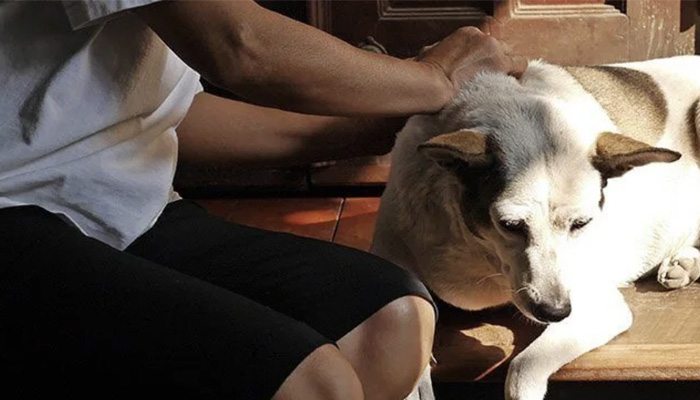
TICKS ON DOGS
Your dog is an extension of your family, so naturally, safety comes first. Ticks are a common health concern, especially with the global increase of tick-borne diseases1.
You may not realize it, but ticks pose a considerable threat to your dog regardless of whether or not your dog is outdoors.
What’s worse? If untreated, ticks can make their way into your home, by latching on to your dog, you and your family. Knowing how to spot these parasites, where they flourish, and how to remove and prevent them is crucial to help keep your dog healthy.
HOW DO DOGS GET TICKS?
Ticks inhabit rural and natural areas, and can be found in grass, shrubs, and bushes. The brown dog tick can also be found in as well as buildings, kennels and shelters. Actually, many tick species are becoming more frequent in cityscapes! They just sit and wait to catch a ride on a warm, passing body. Anytime your dog goes out into the world, even for a short walk, a play date at the local park, a trip to the groomer, a ride in the car, a weekend at the kennel, he or she is being exposed to the chance these parasites will hop aboard. Before the ticks bite, they spit out a local anaesthetic that numbs the area2. Once they latch on, they can stay and may secretly feed on the victim’s blood for up to several days2.
WHEN DO TICKS THRIVE?
Ticks can be found all year, although they are most numerous and active during the spring and autumn months. Climate and lifestyle changes help ticks expand their territories and spread to new areas3. Outdoor parasites can be active even in cold months. Because of the long tick season, there is potentially a year-round risk for parasites, and this increases the risk of your dog catching a disease transmitted by these pests.
WHY ARE TICKS A DANGER TO OUR DOGS?
Ticks can transmit serious diseases, Ehrlichiosis, Babesiosis, Lyme disease and Anaplasmosis. The blood feeding activities of ticks can even cause anemia4.
HOW DO I KNOW IF MY DOG HAS TICKS?
Ticks attach to their host and take a blood meal for hours and sometimes days so you may find an attached tick with its mouth burrowed into your dog’s skin. These can look like small to medium sized lumps on the surface, and the presence of 6 to 8 short legs on the lump is a clear indication of a tick. Juvenile ticks can be very tiny and hard to see.
HOW CAN I REDUCE THE RISK OF TICKS?
Ticks may latch onto you or your dog no matter how careful you are, because they are exceptionally well adapted at hiding in the environment, detecting approaching hosts and hitching a ride2. Reduce the risk of tick attacks by avoiding areas with long grass, the edge of the forest, and shrubs—of course, these are areas dogs love to explore.
If there are ticks around your yard, place gravel and wood chips a few feet wide to create a barrier5.
Always check your dog and yourself for ticks when you return from areas where you may have been exposed, and dress appropriately, wearing long pants and boots if possible. Light colored clothing can make it easier for you to see crawling ticks.
HOW DO I CHECK FOR TICKS ON A DOG?7
When examining your dog, it’s important to remember that ticks can be as small as pencil points or as large as beans when engorged with blood. Ticks like to hide in warm, protected spots so carefully look under your dog’s front legs, inside the ears, between the toes, and around the chin and face6. If you find a tick crawling on the coat, that is not attached, then brush or pick it off and safely dispose of it. If a tick is attached to your dog’s skin, the whole tick will need to be carefully removed.
It is important to remove ticks correctly. There are adapted tweezers and tick lifting devices that can be very helpful. You may want to ask your veterinarian to help you, especially if you find multiple ticks on your dog.
If you plan to remove the tick yourself, use tweezers and try to lift the tick out in one piece, as feeding ticks insert their mouthparts into the skin. If the tick breaks apart while you are removing it, then remove as much of it as you can from your dog’s skin. Use the tweezers to draw out the remaining body and legs.
After removing the tick, keep it sealed tightly in a jar with alcohol and dispose.
Remaining calm and positive is important. This, in conjunction with a little TLC, will have your dog feeling good as new before you know it!
Ticks may seem incredibly disgusting, sneaky and resilient, but they are not invincible.
Proactively manage and protect your dog from ticks by treating with Bravecto® (fluralaner) which provides 12 weeks* of nose to toes flea and tick protection – that’s nearly 3x longer than other monthly treatments. When using Bravecto®, 100 % of ticks are killed within 12 hours8 and, it doesn’t wash off during grooming or swimming, giving you the peace of mind that ticks that are gone, stay gone!
Bravecto® is available from your veterinarian.
*Bravecto kills fleas, prevents flea infestations, and kills ticks (black-legged tick, American dog tick, and brown dog tick) for 12 weeks. Bravecto also kills Lone star ticks for 8 weeks.
References:
- Gray, J. S., Dautel, H., Estrada-Peña, A., Kahl, O., & Lindgren, E. (2009). Effects of climate change on ticks and tick-borne diseases in Europe. Interdisciplinary perspectives on infectious diseases, 2009. https://doi.org/10.1155/2009/593232
- Centers for Disease Control and Prevention. (September 2020). How Ticks Spread Disease https://www.cdc.gov/ticks/about/index.html
- Bouchard, C., Dibernardo, A., Koffi, J., Wood, H., Leighton, P. A., & Lindsay, L. R. (2019). Climate change and infectious diseases: the challenges: N increased risk of tick-borne diseases with climate and environmental changes. Canada Communicable Disease Report, 45(4), 83.
- Companion Animal Parasite Council. (April 2017). Ticks for Dog. https://capcvet.org/guidelines/ticks/
- Centers for Disease Control and Prevention. (February 2019). Preventing Ticks in the Yard https://www.cdc.gov/ticks/prevention/index.html
- Meyers, H. (March 19, 2021). 7 Places to Looks for Ticks on Your Dog. American Kennel Club. https://www.akc.org/expert-advice/health/places-to-look-for-ticks-on-dog/
- Centers for Disease Control and Prevention. (May 2022). Tick Removal. https://www.cdc.gov/ticks/prevention/preventing-ticks-on-pets.html
- Wengenmayer et al. Parasit Vectors. 2014; 7:525.
IMPORTANT SAFETY INFORMATION:
BRAVECTO 1-MONTH (fluralaner) Chews: indicated for dogs 8 weeks of age and older. The most commonly reported adverse reactions include itching, diarrhea, vomiting, decreased appetite, elevated ALT, lethargy, and weight loss. BRAVECTO 1-MONTH is not effective against A. americanum in puppies less than 6 months of age. BRAVECTO (fluralaner) Chews for Dogs: The most commonly reported adverse reactions include vomiting, decreased appetite, diarrhea, lethargy, polydipsia, and flatulence. BRAVECTO (fluralaner topical solution) for Dogs: The most commonly reported adverse reactions include vomiting, hair loss, diarrhea, lethargy, decreased appetite, and moist dermatitis/rash.
BRAVECTO Chews and Topical Solution for dogs has not been shown to be effective for 12-weeks’ duration in puppies less than 6 months of age. BRAVECTO Chews and Topical Solution for Dogs is not effective against the lone star tick beyond 8 weeks of dosing. BRAVECTO Topical Solution for Dogs is for topical use only. Avoid oral ingestion.
All BRAVECTO products contain fluralaner, which is a member of the isoxazoline class. This class has been associated with neurologic adverse reactions including tremors, ataxia, and seizures. Seizures have been reported in dogs receiving isoxazoline class drugs, even in dogs without a history of seizures. Use with caution in dogs with a history of seizures or neurologic disorders.

